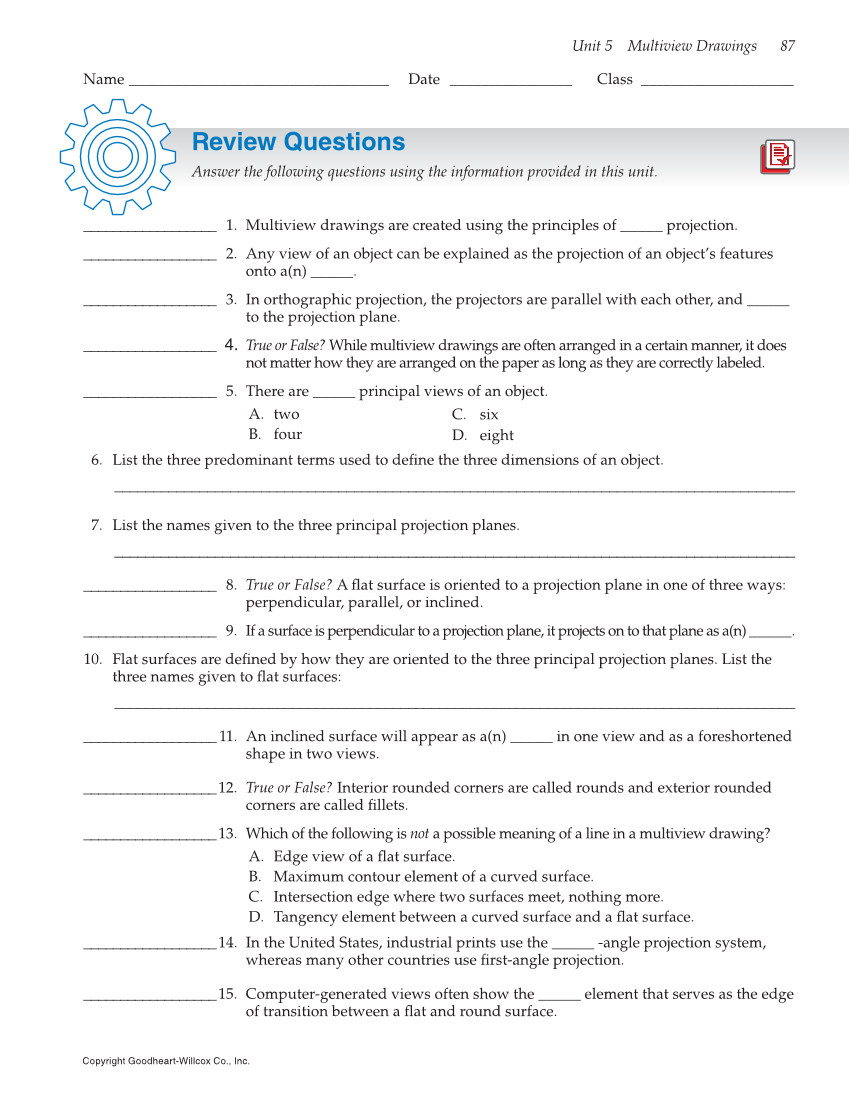Unit 5 Multiview Drawings 87 Copyright Goodheart-Willcox Co., Inc. Name __________________________________ Date ________________ Class ____________________ Review Questions Answer the following questions using the information provided in this unit. __________________ 1. Multiview drawings are created using the principles of _____ projection. __________________ 2. Any view of an object can be explained as the projection of an object’s features onto a(n) _____. __________________ 3. In orthographic projection, the projectors are parallel with each other, and _____ to the projection plane. __________________ 4. True or False? While multiview drawings are often arranged in a certain manner, it does not matter how they are arranged on the paper as long as they are correctly labeled. __________________ 5. There are _____ principal views of an object. A. two B. four 6. List the three predominant terms used to define the three dimensions of an object. ________________________________________________________________________________________ 7. List the names given to the three principal projection planes. ________________________________________________________________________________________ __________________ 8. True or False? A flat surface is oriented to a projection plane in one of three ways: perpendicular, parallel, or inclined. __________________ 9. If a surface is perpendicular to a projection plane, it projects on to that plane as a(n) _____. 10. Flat surfaces are defined by how they are oriented to the three principal projection planes. List the three names given to flat surfaces: ________________________________________________________________________________________ __________________ 11. An inclined surface will appear as a(n) _____ in one view and as a foreshortened shape in two views. __________________ 12. True or False? Interior rounded corners are called rounds and exterior rounded corners are called fillets. __________________ 13. Which of the following is not a possible meaning of a line in a multiview drawing? A. Edge view of a flat surface. B. Maximum contour element of a curved surface. C. Intersection edge where two surfaces meet, nothing more. D. Tangency element between a curved surface and a flat surface. __________________ 14. In the United States, industrial prints use the _____ -angle projection system, whereas many other countries use first-angle projection. __________________ 15. Computer-generated views often show the _____ element that serves as the edge of transition between a flat and round surface. C. six D. eight
